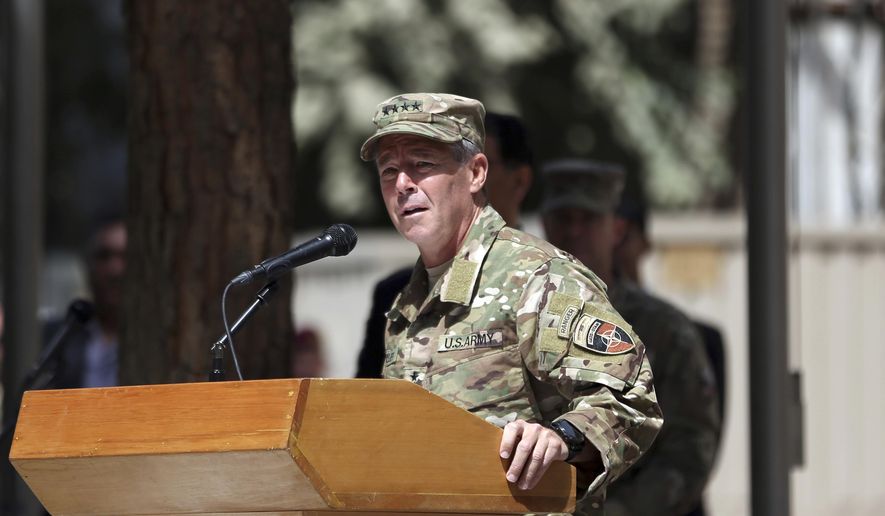Just two days before the nation’s pivotal elections, a brazen shooting rocked Afghanistan on Thursday, leaving at least two top Afghan officials dead and narrowly missing the apparent target: U.S. Gen. Scott Miller, the head of American forces in the country.
The shocking attack took place just after a high-level meeting between U.S. and Afghan officials at the governor’s palace in Kandahar. A gunman reportedly wearing an Afghan army uniform opened fire on his targets as the meeting concluded and the participants had gathered for a photo.
The Taliban, which has vowed to disrupt Saturday’s vote, quickly claimed responsibility for the attack and said Gen. Miller was their target.
Kandahar police chief Abdul Raziq was killed in the assault, as was Kandahar intelligence chief Abdul Mohmin. Kandahar Gov. Zalmay Wesa also was shot, but there were conflicting reports Thursday on whether he’d survived.
U.S. officials inside the meeting disputed the Taliban’s assertion that Gen. Miller was the target.
“It was pretty clear he was shooting at Raziq,” Army. Col. David Butler, who was inside the room when the shooting began, told the Associated Press.
A U.S. service member, an American civilian and a coalition contractor also were wounded in the attack. Each was in stable condition Thursday.
The gunman was shot and killed, American officials said.
Analysts said the death of Mr. Raziq — a powerful figure in Kandahar and a vital U.S. ally — could greatly destabilize the restive region.
“The assassination of Raziq is a major blow to the Afghan government and may significantly impact the security situation in Kandahar and throughout the south,” wrote Bill Roggio, a senior fellow at the Foundation for Defense of Democracies.
“Today I lost a great friend Lt. Gen. Raziq,” Gen. Miller said via Twitter later Thursday. “We had served together for many years. … The good he did for Afghanistan and the Afghan people cannot be undone.”
Afghan officials said they were already moving additional security forces to the area.
U.S. officials sought to downplay the notion that the Taliban had explicitly targeted American military officials. Instead, they cast the incident as “Afghan-on-Afghan” violence. The U.S. turned over security to the Afghan government in 2014, though some American forces remain in the country. So far this year, eight U.S. soldiers have been killed in Afghanistan.
⦁ This article is based in part on wire-service reports.
• Ben Wolfgang can be reached at bwolfgang@washingtontimes.com.




Please read our comment policy before commenting.